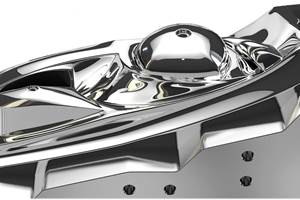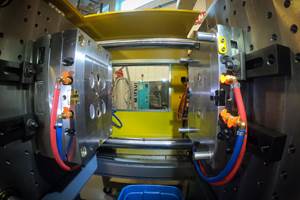Advanced Mold Welding: Sharing Decades’ Worth of Lessons Learned
Our new contributor considers welding a vital part of moldmaking and plans to share his experiences.
Moldmaking, metals and welding are in my blood. I had my own welding/machine shop and materials testing lab for more than 40 years. Although I am retired and no longer have my shop or lab, I still do consulting for a few of my old customers and give lectures at Orange Coast College in Costa Mesa, California. I have so much related information stored in my brain that I could fill volumes. Now, I want to share what I have learned about mold welding over the years.
First, a little more about me: While still attending high school, I served an apprenticeship at Alamo Iron Works in Texas and then joined the U.S. Navy, where I worked in the ship’s toolroom for four years. After an honorable discharge, I worked for rubber products manufacturer AMF Voit for 16 years as a general machinist, prototype specialist and then in R&D. Looking to advance my career and open my own tool-steel welding shop, I attended night school and took every welding, repair and metals class I could. I joined ITT Cannon in Santa Ana, California, which specializes in connectors for the aerospace and computer industries, where I was a master moldmaker craftsman for 16 years. I then finally opened my own tool-steel welding shop.
With everything I’ve experienced, I might dare to say that making a mold is easier than welding one. Welding requires more than one physical skill; it also demands the skills of a tool-steel specialist, a moldmaker, a heat treater and a metallurgist. All of these skills are necessary to execute a weld that will extend, not shorten, the life of a mold. A mold welder’s goal is to provide the best possible weld, to prolong the life of the mold and to get the customer back into production. To achieve these goals, the welder needs to understand welding fundamentals and ask the right questions, which will be the focus of this column starting next month.
To give you just a taste, here are some areas I will review. The importance of categorizing a weld at the start of a job as structural, buildup or cosmetic. For structural welds, using the right rod is key; for buildup welds, establishing edges, parting lines and gates is essential; and for cosmetic welds, which are considered “final” welds, making sure they look good and wear evenly is of the utmost importance. These basics are just the start.
Welding terms are commonly misunderstood and misused, so an accurate understanding of preheating, postheating, heat treating, stress relief, annealing, draw pointing and quenching are key. Picking the right tool steel for a particular welding job is essential, so it is important that the welder communicate with his steel suppliers first, and then review considerations for material selection, including the various steel types (water-hardening, air-hardening, oil-hardening), because not all tool steels (H13, P20) are the same. He should get familiar with wear testing, and talk to heat treaters about material and temperature. It’s also critical to understand the value of preheating tool steel, the concept of thermal shock, how much to heat treat and the effects of galling.
Communication is key. Feedback is essential for providing a good weld as is learning the appropriate questions to ask to get good feedback. Everyone involved needs to consider the whole picture. For example, if the welder wants to try a new welding material, he should discuss any potential problems with the moldmaker and the heat treater. It’s a good idea for him to obtain a sample of the new material and practice welding with it, so the welder can accurately advise customers about the use of this material when a repair is necessary.
In the end, it is the welder’s job to help the customer realize that repair reduces lost production time. This is why welding is such a vital part of moldmaking, and why I am ready to share what I know. If you have a topic suggestion, email Editorial Director Christina Fuges at cfuges@gardnerweb.com.
Related Content
How to Achieve the Best Mold Finish
A look at factors that impact the polishability of tool steels and recommendations for obtaining a high-gloss finish.
Read MoreWhat is Scientific Maintenance? Part 2
Part two of this three-part series explains specific data that toolrooms must collect, analyze and use to truly advance to a scientific maintenance culture where you can measure real data and drive decisions.
Read MorePredictive Manufacturing Moves Mold Builder into Advanced Medical Component Manufacturing
From a hot rod hobby, medical molds and shop performance to technology extremes, key relationships and a growth strategy, it’s obvious details matter at Eden Tool.
Read MoreRead Next
How to Use Strategic Planning Tools, Data to Manage the Human Side of Business
Q&A with Marion Wells, MMT EAB member and founder of Human Asset Management.
Read MoreAre You a Moldmaker Considering 3D Printing? Consider the 3D Printing Workshop at NPE2024
Presentations will cover 3D printing for mold tooling, material innovation, product development, bridge production and full-scale, high-volume additive manufacturing.
Read MoreReasons to Use Fiber Lasers for Mold Cleaning
Fiber lasers offer a simplicity, speed, control and portability, minimizing mold cleaning risks.
Read More


















